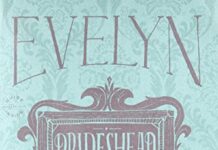
Ebook Info
- Published: 1996
- Number of pages: 240 pages
- Format: Epub
- File Size: 9.43 MB
- Authors: Jonathan Swift
Description
Regarded as the preeminent prose satirist in the English language, Jonathan Swift (1667–1745) intended this masterpiece, as he once wrote Alexander Pope, to “vex the world rather than divert it.” Savagely ironic, it portrays man as foolish at best, and at worst, not much more than an ape.
The direct and unadorned narrative describes four remarkable journies of ship’s surgeon Lemuel Gulliver, among them, one to the land of Lilliput, where six-inch-high inhabitants bicker over trivialities; and another to Brobdingnag, a land where giants reduce man to insignificance.
Written with disarming simplicity and careful attention to detail, this classic is diverse in its appeal: for children, it remains an enchanting fantasy. For adults, it is a witty parody of political life in Swift’s time and a scathing send-up of manners and morals in 18th-century England.
User’s Reviews
Regarded as the preeminent prose satirist in the English language, Jonathan Swift (1667–1745) intended this masterpiece, as he once wrote Alexander Pope, to “vex the world rather than divert it.” Savagely ironic, it portrays man as foolish at best, and at worst, not much more than an ape.The direct and unadorned narrative describes four remarkable journies of ship’s surgeon Lemuel Gulliver, among them, one to the land of Lilliput, where six-inch-high inhabitants bicker over trivialities; and another to Brobdingnag, a land where giants reduce man to insignificance.Written with disarming simplicity and careful attention to detail, this classic is diverse in its appeal: for children, it remains an enchanting fantasy. For adults, it is a witty parody of political life in Swift’s time and a scathing send-up of manners and morals in 18th-century England.
Reviews from Amazon users, collected at the time the book is getting published on UniedVRG. It can be related to shiping or paper quality instead of the book content:
⭐ Reader be warned — despite being adapted into various kids’ books and movies over time, “Gulliver’s Travels” is NOT a children’s book. The concept may sound like a children’s fairy tale, but Jonathan Swift intended this book to be a parody of the travel books of his time, as well as a scathing satire of British culture and government of the day. And to be honest… despite the imaginative concepts behind it, it’s a very tedious book to plow through. It’s worth a read at least once, to get the gist of the story and appreciate what Swift was trying to do, but overall it was a chore to read.”Gulliver’s Travels” follows Lemuel Gulliver, a ship’s surgeon who has a passion for traveling the world. Through shipwrecks, pirate attacks, and other various misadventures, he finds himself in various strange locations all over the world — an island populated by tiny people who see him as a giant, a land of giants who see him as a tiny person himself, a floating island of self-professed geniuses whose philosophies and inventions are nothing short of insane, a race of immortals who prove that immortality isn’t all its cracked up to be, and a race of intelligent horses who view humans as abominable beasts. And along the way Gulliver has a chance to proclaim the might and supposed superiority of the British Empire… only for his claims to be laughed at and proven wrong along the way.For those only familiar with “Gulliver’s Travels” via children’s adaptations or *sigh* the Jack Black film, this book will probably be something of a surprise. Most adaptations only show Gulliver’s adventures in Lilliputa (though some will also depict his journey to the land of giants as well), and skip the last half of the book entirely. Your mileage may vary on whether this is a bad thing or not — it does cut out some of Gulliver’s more fantastic journeys, but also trims out some of the political satire and more outlandish misadventures. Still, the land of intelligent horses was interesting, and it’s a shame it doesn’t get more attention in adaptations.The writing itself comes across as stilted and stuffy compared to modern-day writing, with a lot of archaic and now-obscure words and terms scattered throughout, so unless you read a lot of classics you’ll probably have a hard time getting through the writing style. Beyond the writing style, the book can get boring and tedious to read, especially as Swift has no problems screeching the plot to a halt in order to have Gulliver monologue about his precious British Empire and his homeland’s way of life and politics, so that other characters might point out the flaws for themselves or otherwise skewer his pride in his homeland. In its day it was probably a cutting-edge satire, meant to be a punch in the gut to its readers, but nowadays it can be frustrating to read.That’s not to say there’s nothing of worth in this book. It’s still a curiosity to read, and it’s nice to get the full story of the book instead of a bloodless and heavily-edited children’s adaptation. And it’s interesting to compare it to its various adaptations. (Fun fact — the scene in the Jack Black film adaptation of “Gulliver’s Travels” where Gulliver puts out a fire by urinating on it? It wasn’t just added for the sake of bathroom humor — it’s an actual scene from the original book!)Worth a look as a curiosity, especially if you’re only familiar with the story from a film or children’s adaptation, or if you’re interested in 18th-century literature and satire. It’s not a book I’m sure I’ll reread, however, and I found myself bored by it and skimming chunks where the author monologues about the problems of British society of the day. And parents should probably opt for an abridged adaptation for their kids — something I don’t always recommend, but do so for this book.
⭐ [Note: the free Kindle edition, titled _Gulliver’s Travels Into Several Remote Regions of the World_, includes only the first two parts of the four sections that make up Swift’s book. In this review, however, I consider _Gulliver’s Travels_ in its entirety, hence the five-star rating.]When I was a child, growing up in Latin America, my parents would buy me a magazine that included the classics of world literature in simplified versions. There were at least two collections, and they include such works as _The Little Prince_, _The Iliad_, _The Jungle Book_, _Romeo and Juliet_, _Don Quixote_, _Robinson Crusoe_, _Around the World in 80 Days_, and of course, _Gulliver’s Travels_. Swift wrote an acid satire on politics, reason, science, and humanity in general, yet his book metamorphosed into children’s literature. Even this transformation attests to the greatness of _Gulliver’s Travels_. In order for a book to transform itself that way, it has to be more than a simple artifact; this book is a living organism.While _Robinson Crusoe_ (1719) can be described as a novel (some call it the first English novel), _Gulliver’s Travels_ (1726) falls into a different category. The best way to describe Swift’s book would be as a fake travel narrative. Swift, in other words, was playing with genre conventions the way postmodernists would, some 200 years later. _Gulliver’s Travels_ can be filed–with some alterations–under Children’s Literature because it is an adventure story, and because of its unforgettable images. This is what generally comes to mind when _Gulliver’s Travels_ is mentioned: a race of minute beings, a race of gigantic beings, a flying island, rational horses. Yet this book features a good deal of scatological humor. Gulliver extinguishes a fire by urinating on it. In the flying island, a group of scientists try to find a way to turn feces back into food. There are also many instances of the grotesque, especially the description of breastfeeding in the second voyage._Gulliver’s Travels_ is divided into four parts, each of which could be read independently. The most famous, and perhaps the most “harmless” is the first, the voyage to Lilliput, during which Gulliver meets a race of tiny people. This first voyage satirizes politics in Swift’s time. For example: Gulliver is criticized by the creative way in which he extinguished the fire, and even though he had good intentions, he achieved a good result through a foul method. Gulliver is, in this particular case, Swift, writing biting satires in order to inspire change in his society. The second voyage takes our “hero” to Brobdingnag, where people are huge. It is all a matter of comparison: now, Gulliver is the Lilliputian. (Voltaire would write on the exact same theme, under the direct influence of Swift, his 1750 story _Micromégas_.) The third voyage was the last to be written, and it is, in my opinion, the most imaginative. A flying island sounds like a wonderful thing. This island is called Laputa, a name you’re familiar with if you’re a Miyazaki fan. If you know Spanish you’ll laugh, and you’re meant to. (In my children’s edition of the book, by the way, the island’s name was changed to Lupata, for obvious reasons.) Laputa is a satire on the Royal Society, which was dedicated to knowledge through science, following the Cartesian belief that knowledge should be objective and the product of reason. Laputa rules: since it is in the sky, it can fly over any potential rebellious region below and block the sun and rain. The third voyage also includes visits to other lands, such as Luggnagg, where Gulliver meets a race of immortals, and Glubbdubdrib, where the traveler can talk with ghosts.The fourth and last section of the book requires a separate paragraph. This is the voyage to the land of the Houyhnhnms, a word that appears impossible to pronounce until the reader is told that it is basically the neighing of a horse. Houyhnhnms are just that, horses, but these animals are pure reason. They show no emotions, and they have subjected a grotesque, nearly human race known as the Yahoos (Swift coined this term, incidentally). Gulliver loves the Houyhnhnms, and he cannot stand the fact that, to them, he is simply a more sophisticated type of Yahoo. This voyage is the one that has the deepest effect on Gulliver. His return to England, and the way it affects him after life among the Houyhnhnms, is perhaps the most pathetic episode in the book.Swift has been labeled a misanthrope because of the view of humanity conveyed by _Gulliver’s Travels_. The reader must remember, however, that the narrator of this book is not Swift, but Gulliver. In fact, Swift’s works were published anonymously, as if the author wore a different mask each time he wrote one of his satires. Gulliver criticizes humanity, but he is even more worthy of criticism himself. Regarding Swift, he once wrote that he hated “that animal called man,” but he loved individual human beings. This is not such an uncommon attitude. Other people feel the exact opposite. Many of us have heard the saying, “I love humanity, but people annoy the hell out of me.” In any case, satire implies caring. If one didn’t care about humanity and its institutions, one wouldn’t bother to write about them. Behind the acerbic criticism lies a concern for what the satirist is criticizing, and a desire for improvement. Gulliver’s Travels is one of the highlights in the immortal tradition that goes back to Petronius’ _Satyricon_ and Apuleius’ _Metamorphoses_, and which includes such varied works as Rabelais’ _Gargantua and Pantagruel_ and William S. Burroughs’ _Naked Lunch_.If you are looking for a physical copy of the book, I recommend the one that belongs to the Ignatius Critical Editions series. The quality of the paper and the binding are excellent. I decided to get this edition because it includes the text of Gulliver’s Travels with its original typography (Nouns are capitalized, some Words or Phrases are in Italics, though sometimes it is hard to figure out the Reason why), and footnotes. Since these editions are meant primarily for students, many of the footnotes clarify terms that I myself did not need clarified (“inimitable,” for instance), but others are helpful when it comes to background and symbolism. The book also includes six critical essays, and I liked the variety of these. I especially enjoyed the essays by Mitchell Kalpakgian (“Gulliver the Epic ‘Hero’ and ‘Great’ Travel Writer: A Modern Battles the Ancients”) and Dutton Kearney (“The Man Who Is Not: Virtue, Politics, and Gulliver’s Travels).If _Robinson Crusoe_ is a realist novel, _Gulliver’s Travels_ is a work of fantasy. Both are great traditions in English literature, and both of these books constitute early examples that have stood the test of time. Both works, furthermore, are highly moralizing, though the difference lies in the focus. Defoe’s novel presents a positive example; Swift’s book, several negative ones. In a sense, these works are two sides of the same coin. There is something for everyone in _Gulliver’s Travels_. I don’t hesitate to call it one of the most amazing books I’ve ever read. Some might say it is not a book for children, but I disagree. It is a book for children, but that is only one of the many things that it is.Thanks for reading, and enjoy the book!
⭐ I’m glad there is a company keeping up the unabridged versions. For those looking for unabridged.. you probably know what that means. For others, it just means uncut or parts not removed. This is required in cases of book reports and projects… or those that want the full story.The print is pretty small. This is not a complaint from me as it doesn’t bother me. Just a heads up if you have trouble with smaller font / print.Overall we are very happy with the book. It’s a great price point… cover / pages are decent. I highly recommend to purchase for kids and adults to read through the classics at a great price and unabridged.
⭐ I have always thought this a child’s book, I was wrong….Reading this book, I got the feeling the author was cynical and masagenistic. I didn’t enjoy this book and was put off enough that I read about the author himself. It turns out Mr Swift was sending a political message. The book reads so angrily and from my female point of view, felt the authors contempt for the female species. I do NOT recommend this book.
⭐ This book might today be more remembered for the innumerable parodies of its early scene of Gulliver waking up, tied down on the beach by the tiny inhabitants of an unknown island, than it is for having actually been read. But this is a true classic, filled with witty humor and sharp satire on most aspects of then current European life, religion and politics. Which in all honesty haven’t changed much in the almost 300 years since the book was written.The one thing that keeps it from a full five-star score is that at times, mainly in the second of the four journeys, it does feel a bit repetitive. The first and second journey having much in common with each other.
⭐ I read the Illustrated Classics version as a kid and when I was in my mid-teens, I read the full version. To this day, I am still enjoying both versions; which one I read depends on my mood and how I feel.The author uses great metaphors, like storms, to transition between different islands. Each change in setting teaches many important lessons without the reader really realizing it. How the author does this is a mystery and keeps the reader hooked,, wanting to know what will happen next snd if the characters will ever retturn home. You also wonder how things will change for thr main character if their journey does end and what the long lasting effects will be. Not just on that person, but those around them and where they live.This is an interesting, intriguing, edge of your seat book that you don’t want to miss!
⭐ Most people are only familiar with two worlds of Gulliver’s Travels — Lilliput and Brobdingnag. This book contains all four lands of Gulliver’s visits. Nearly three hundred years of the evolution of the English language (and sentence structure) occasionally make reading heavy going. However, if my ten year old sons can comprehend much of the writing, I feel most can wade through the prose as well. I read this story, originally, many years ago while in prep school as part of my 10th grade English. I have to admit, I understand the book and the satirical nature far better now.
⭐ I chose this edition of GULLIVER’S TRAVELS because it has an accompanying narration available from Audible.com. It features WhisperSync, so you can switch back and forth between reading and listening without losing your place. Also, the price is right!GULLIVER’S TRAVELS is a very early novel, first published in 1726 – just seven years after ROBINSON CRUSOE, often cited as the first modern novel. It has no dialogue at all, since it’s in the form of a memoir narrated by Gulliver of his travels, and it can be rather tough sledding to read it. However, listening to it (I mostly listened to it, instead of reading it) makes it much easier to comprehend, especially when it is read/performed as well as this was, by David Hyde Pierce (from “Frasier”). I really enjoyed this classic, a lot more than if I had simply read it.
⭐ I bought this with an Audible pairing. It is abridged such that there were large passages of text omitted which were read in the Audible version. In fact, I just finished reading all the text available and, surprised by this prompt to review the book, realize that this book leaves out the last half of the story. As I purchased it a long time ago, it’s possible that Amazon has updated the description of this edition to reflect these abridgments. This has happened to me before with Audible/Kindle pairings of classics. It’s a gamble to buy them.
⭐ This is the unabridged -1739- version of the book, I believe, which is abridged compared to the 1726 version. Any apparent abridgement is because of the author’s own abridgement of the work, I believe.
Keywords
Free Download Gulliver’s Travels (Dover Thrift Editions) in Epub format
Gulliver’s Travels (Dover Thrift Editions) Epub Free Download
Download Gulliver’s Travels (Dover Thrift Editions) 1996 Epub Free
Gulliver’s Travels (Dover Thrift Editions) 1996 Epub Free Download
Download Gulliver’s Travels (Dover Thrift Editions) Epub
Free Download Ebook Gulliver’s Travels (Dover Thrift Editions)




